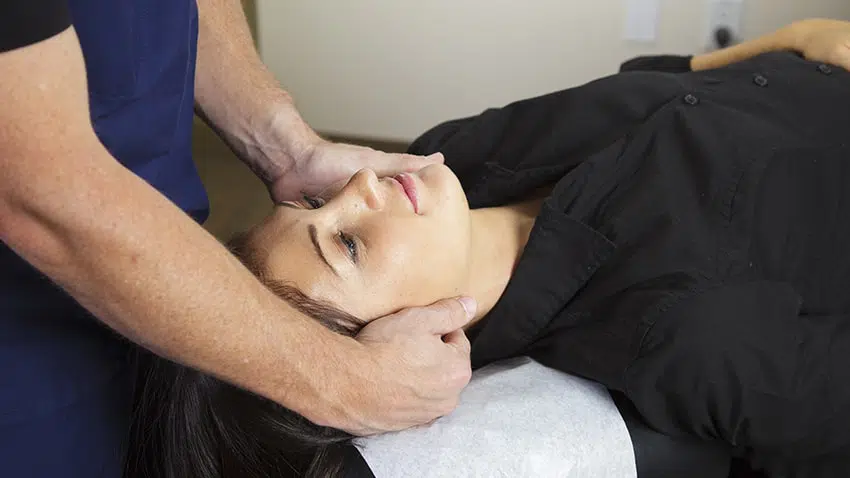Mechanical neck pain affects about 70% of people at some point in life. Many different treatment approaches are available for neck pain. It can be very difficult for those suffering from neck pain to know which treatment approach(es) to choose. The research on this topic has revealed some very interesting information. Chiropractic and spinal manipulation are TOP OF THE HEAP in a VERY STRONG POSITION.
Spinal Manipulation
One such study looked at the benefits of spinal manipulative therapy (SMT) in patients with acute and subacute neck pain. This study compared three study groups: 1. SMT only; 2. medication only; and 3. home exercise and advice (HEA). 272 neck pain patients suffering from neck pain for 2 to 12 weeks were studied randomly. During a twelve-week treatment period,1 of the 3 treatment approaches tracks the results with participant-rated pain as the primary treatment outcome measure. Secondary outcome data was obtained from other approaches. Results showed that the group treated with SMT, “…had a statistically significant advantage over medication after 8, 12, 26, and 52 weeks. In conclusion, SMT is supported and exercise/advise is the choice over medication for acute and subacute neck pain patients.
Chronic Neck Pain
Regarding chronic neck pain patients, another study evaluated the changes that occurred in 191 patients. Chronic means pain that has been present for greater than 3 months. These patients are place randomly in 1 of 3 treatment groups for eleven weeks. Evaluation is 3, 6, 12, & 24 months after treatment. The 3 treatment options included: 1. Spinal manipulative therapy (SMT) only; 2. SMT with low-tech neck exercises; or 3. a form of exercise utilizing a MedX rehab machine. Results show the highest level of patient satisfaction was found in the 2nd group. This suggests that when individuals present for treatment, spinal manipulation with low-tech exercises results in the most satisfied patient. These findings are important as this study viewed the long-term benefits among patients who have had chronic neck pain. Whereas most studies only look at the short-term benefits.
Similar conclusions were reported from perhaps the largest scale study on neck pain based on research from 1980 to 2006 on the use, effectiveness, and safety of non-invasive treatment approaches for neck pain and associated disorders. Over 350 published articles found manual therapy (manipulation and mobilization) and supervised exercise to SHINE when compared with other treatment options.



